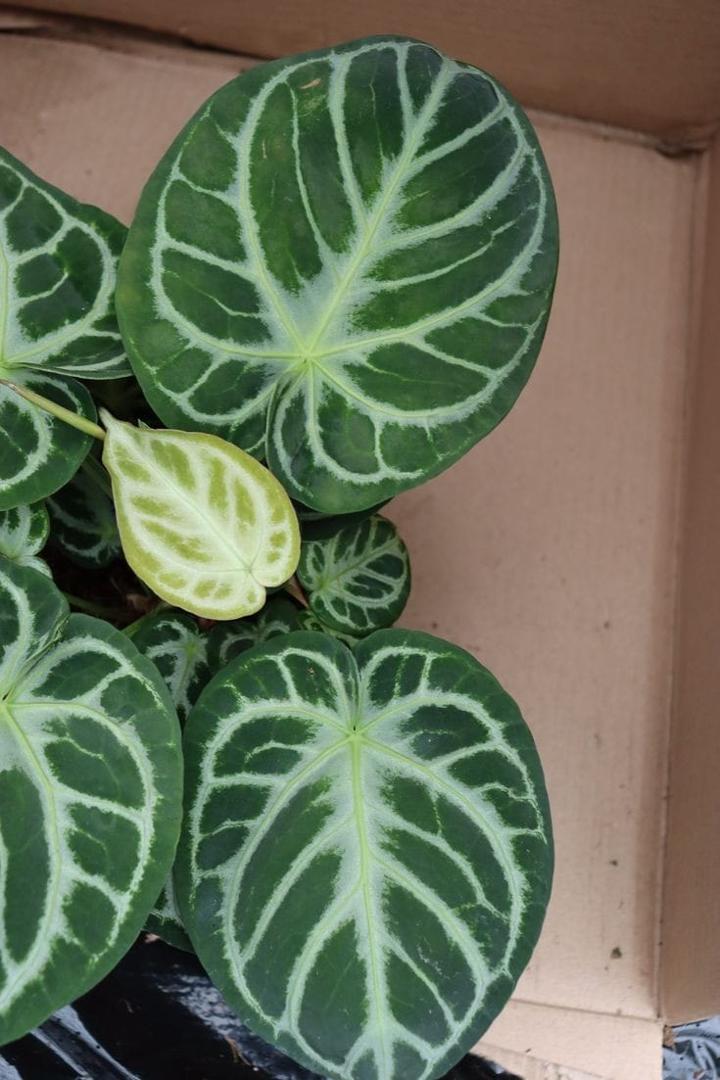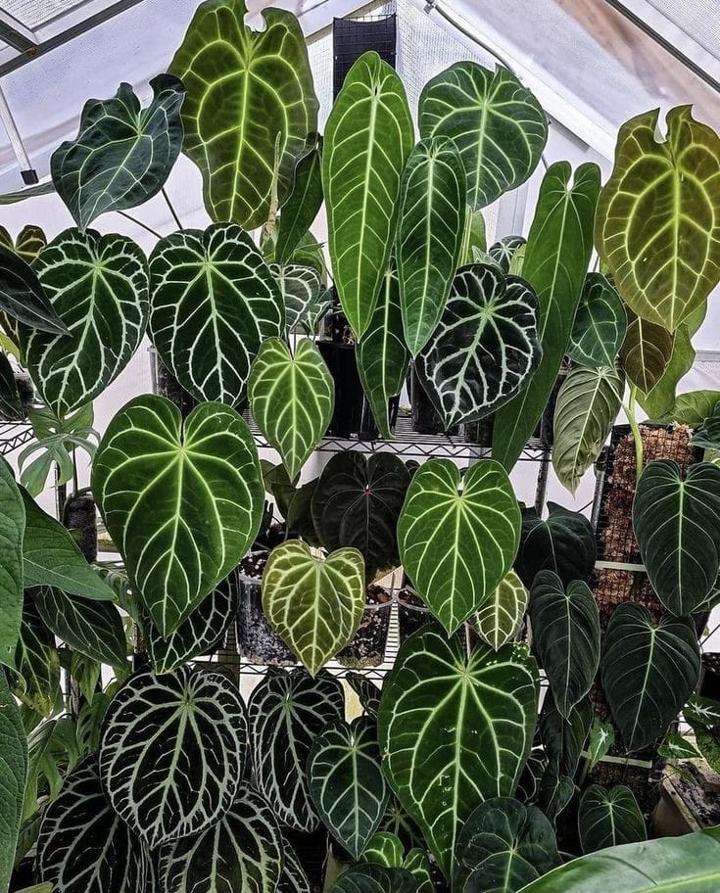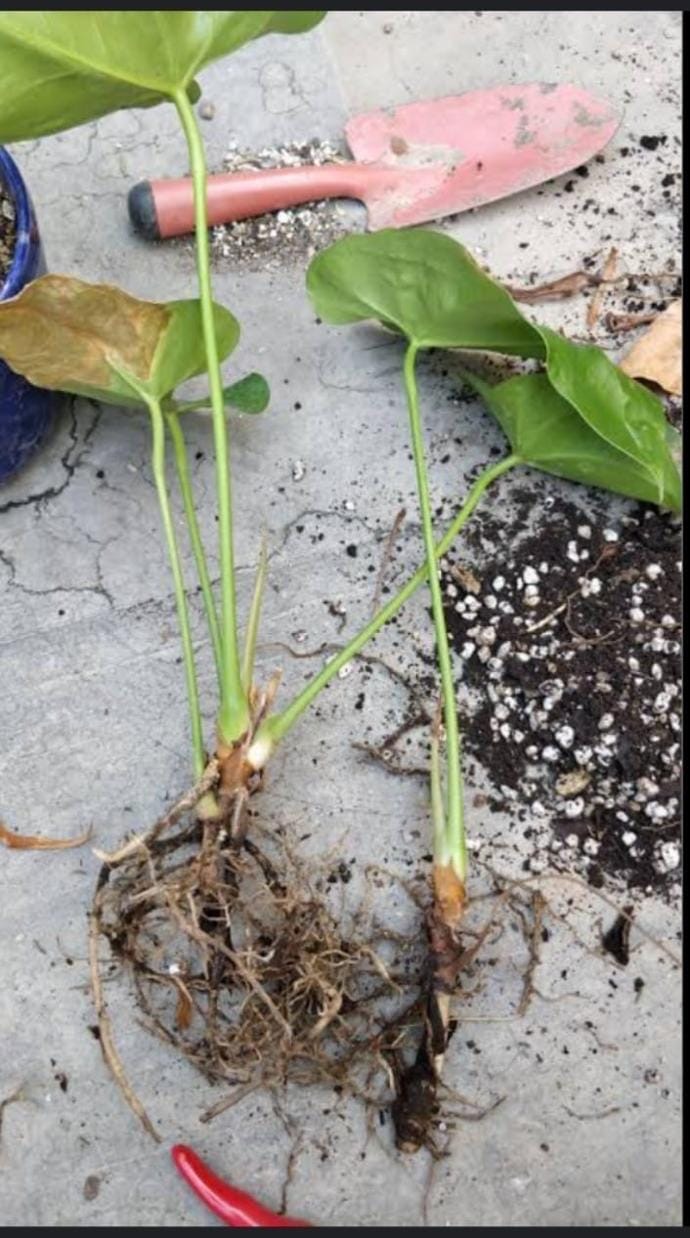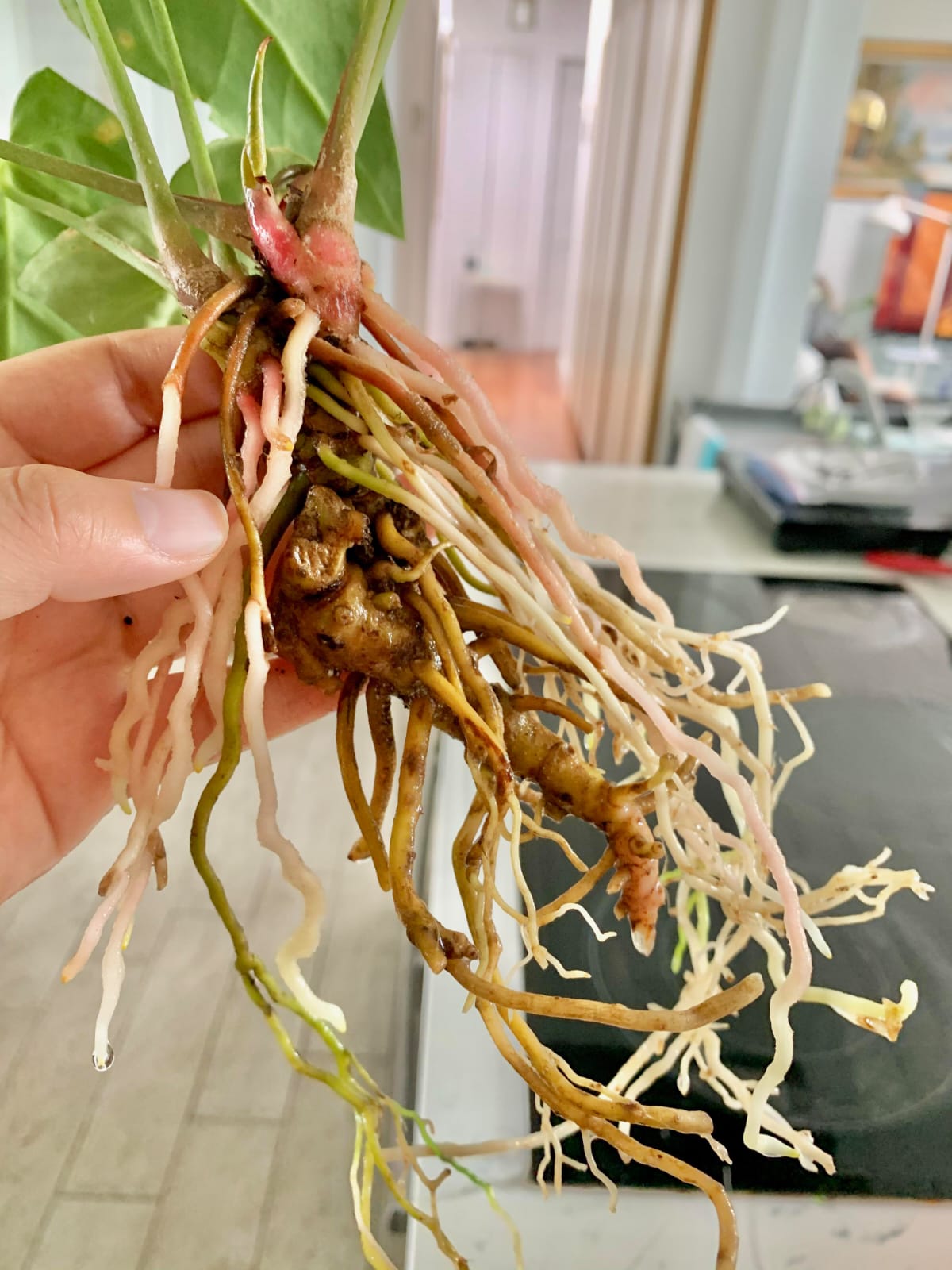Foliage Anthurium Plant
Foliage Anthurium, a specific variety, may have care requirements similar to other Anthurium plants. Plant in well-draining soil, provide bright, indirect light, and keep the soil consistently moist. Pruning can be done to remove old or yellowing leaves.

Habit
Perennial
Height
30 to 90 cm
Growth
Moderate
Soil
Well-drained peat soil
Shade
Partial Shade to Full Sun
Moisture
Moist
Edible
No
Medicinal
No
Origin
Colombia
Climatic Condition
Tropical, Humid
Temperature (°)
18 to 30
Humidity (%)
60 to 90
Potting media
Peat mix
Fertilizers
High potassium, organic mix
Watering
High
Plant Weight
200-500 g
Flowering Time
Year-round
Soil Ph level
5.5 to 6.5
Water Ph level
6.0 to 7.0
Soil EC
0.5 to 1.2
Yield Per Plant
Ornamental plant
NPK ratio
10:10:10
life Span
Perennial
Health Benefits
Air-purifying plant, decorative value
Suggested Grow Media or Potting Mix ?
50% peat, 25% perlite, 25% compost
Suggested Fertigation/Fertilizers
Fertilize every 2 weeks with a balanced fertilizer.
Common Diseases and Remedies
Root rot
Root rot results in brown, discoloured roots and weak stems. Over time.
Re potting, Use Neem cake.
HEALTH BENEFITS
- Not commonly used for medicinal purposes but improves indoor air quality.
- Be cautious, as the plant contains calcium oxalate crystals, which can be toxic if ingested.
What Is Foliage Anthurium Tree?
Leaf Anthurium refers to the type of anthurium grown for its beautiful leaves rather than its flowers. Anthuriums are tropical plants known for their heart-shaped leaves and bright colors. Foliage anthurium is prized for its lush, glossy leaves, making it a popular choice for indoor or tropical environments.

What Are The Different Types Of Foliage Anthurium Plants?
1.Anthurium crystallinum:-
Anthurium crystallinum is known for its dark green leaves and striking white veins. Its heart-shaped leaves begin to bleed and turn green as they grow, and its flowers are thin. In its native South America, anthurium often grows as an epiphyte perched on trees or other plants. Therefore, it is best to plant anthurium in loose orchid soil. Aerial roots do not adapt to life in the potting soil process.
2. Anthurium warocqueanum:-
Anthurium warocqueanum is similar to crystal anthurium. The plants here also have dark green leaves, striking white veins and delicate flowers. With proper care, the lance-shaped leaves of Queen Anthurium can grow up to two meters in length, which is why the species is called "Queen of Anthuriums". Anthuriums like bright and moist depending on their location.
3. Anthurium andreanum :-
Athurium andreanum is a special plant. Athurium andreanum, also known as flamingo flower, flamingo lily or painter's palette, has heart-shaped leaves up to 40 cm wide and bulbous flowers surrounded by colorful bracts. The color of this bract depends on the variety of the plant.
4. Anthurium scherzerianum:-
Anthurium scherzerianum, also known as flamingo flower or knitting plant, is another popular plant. Unlike anthurium, the leaves of anthurium are longer and smaller, only 30 cm. Fortunately, it is possible to grow braid plants that do not have large leaves into dense blooms. Anthuriums grow in loose and well-drained soil. In fact, these plants can even be placed in water without soil. Hybrids of Anthurium andreanum and Anthurium scherzerianum are also common: Anthurium andreanum 'Baron': variety with green-red bracts. Anthurium andreanum 'Roseorie Choco': variety with 4 hurrie 4reanum bracts with green bracts .Anthurium andreanum 'Cheers ' : With red bracts variety. Anthurium andreanum 'Acropolis': Variety with white bracts
5. Anthurium clarinervium:-
Anthurium clarinervium, also known as heartleaf, looks vaguely like crystal anthurium. Both species have dark green, heart-shaped leaves that display beautiful white veins. But the two species can be distinguished by the color of the fruits. Each bears fruit in a blooming flower. Like most anthuriums, this species likes a bright spot but dislikes full sun because this can cause the leaves to burn.

How to care for Foliage Anthurium Tree?
1. Location :-
Anthurium thrives in bright, indirect light. Place them near a window Where sunlight is filtered. Keep the soil moist at all times, but not waterlogged. Use a well-draining potting mix. Maintain high humidity from plants with water or place a pot of water nearby. Fertilize every 6-8 weeks during the growing season. Wipe the leaves regularly to prevent dust. Do not expose them to drafts or temperatures below 10°C (50°F).
2. Sunshine :-
Provide indirect light. Avoid direct sunlight as it can burn the leaves. Store in a warm environment, preferably between 65-80°F (18-27°C). Avoid extreme temperatures.
3. Soil:-
Make sure the soil is well drained and well aerated. Use a mixture of orchid bark, perlite and peat moss. Keep the soil moist at all times but not waterlogged. Water when the soil surface is dry. Apply the liquid evenly every 6-8 weeks. Provide a warm and humid environment when anthurium grows in these conditions. Check for pests regularly and reapply every 2-3 years to replenish the soil and provide more room for roots to grow.
4. Hydration :-
Always keep the soil moist but not wet. Wait for the soil surface to dry before watering again. Use a well-draining potting mix. Anthuriums like high humidity. Increase humidity by spraying water on the leaves or placing a pot of water next to the plant.

5. Nourishment :-
Apply liquid evenly every 6-8 weeks throughout the growing season (spring and summer). Reduce or stop fertilisation during fall and winter. Fertilize with a balanced liquid fertilizer every 6-8 weeks and use a well-drained potting mix.
6. Issues :-
Always keep the soil moist but not waterlogged. Water when the top soil is dry and use a well-drained potting mix. Make sure there is good drainage in the pot to prevent root rot. Spray water regularly to keep the soil moist and place the plant in a bright, dark location. Avoid direct sunlight as it can burn the leaves. Also apply a balanced liquid every 6-8 weeks during the growing season for health benefits.
What Are The Benefits Of Foliage Anthurium Plants?
Foliage Anthurium is known for its beautiful leaves and many benefits. They improve indoor air quality by filtering toxins, require minimal maintenance, and add a beautiful aesthetic to your space. They also thrive in indirect light and can tolerate low soil, making them suitable for many locations.

FAQs About Growing Foliage Anthurium
1. What are the conditions of sunshine ?
Provide bright, indirect light. Avoid direct sunlight as it can burn the leaves.
2. What are the soil conditions required for Foliage Anthurium ?
Use well-drained peat potting mix. Anthuriums love slightly acidic soil.
3. When can I repot Anthurium ?
Repot every 1-2 years or when the plant outgrows its pot. Choose a pot that is just slightly larger than your current pot.
4. Can I grow Anthurium at home ?
Yes, you can grow green anthurium at home. They thrive in well-drained soil, bright indirect light and high humidity. Keep the soil moist but not waterlogged, and consider placing a pot of water or using a humidifier to maintain moisture.
5. Which Pot is Best for Growing Leafy Anthurium Plants in India?
To grow leafy anthurium in India, consider using a well-drained pot mixed with peat, moss, perlite and orchid bark. Choose a pot that is 1-2 inches larger than your current pot to allow room for growth. Make sure the pot has a water hole to prevent water from dripping.



